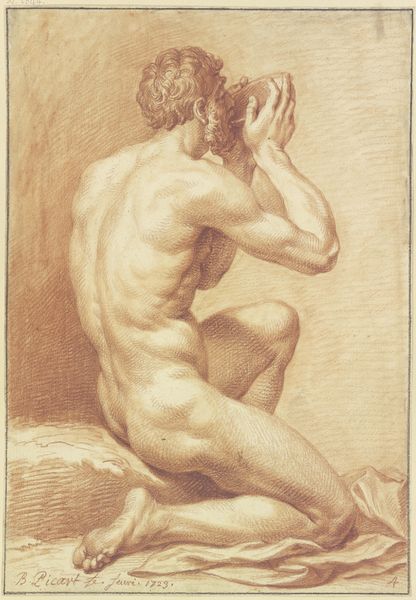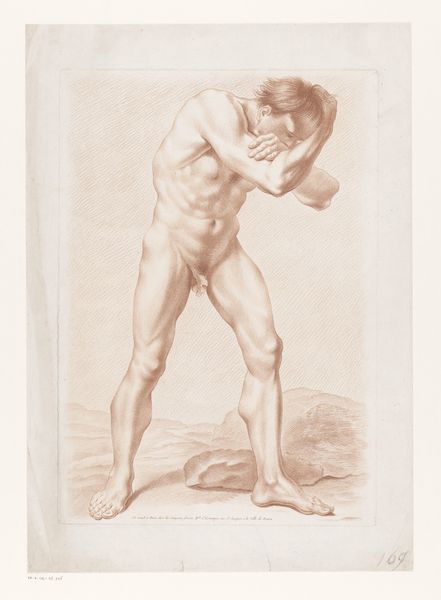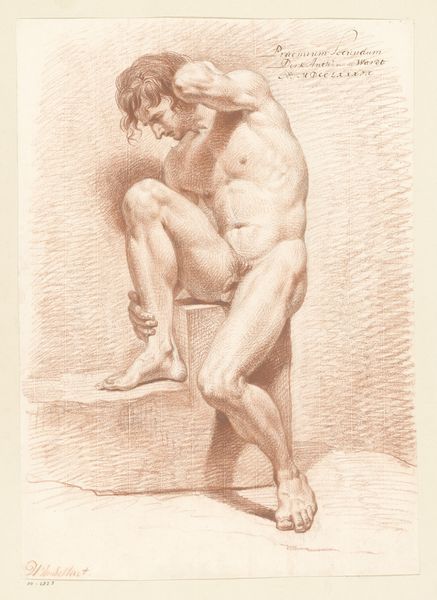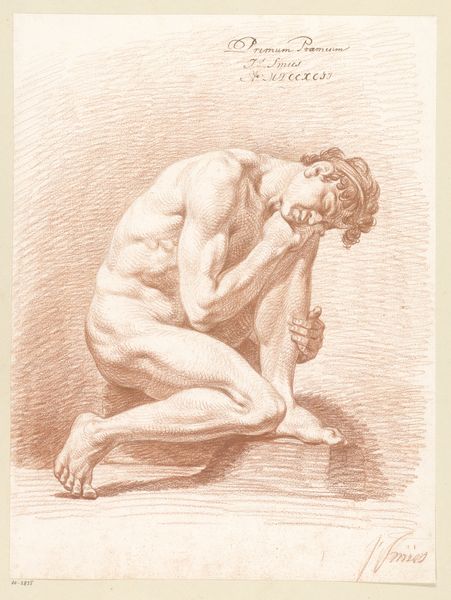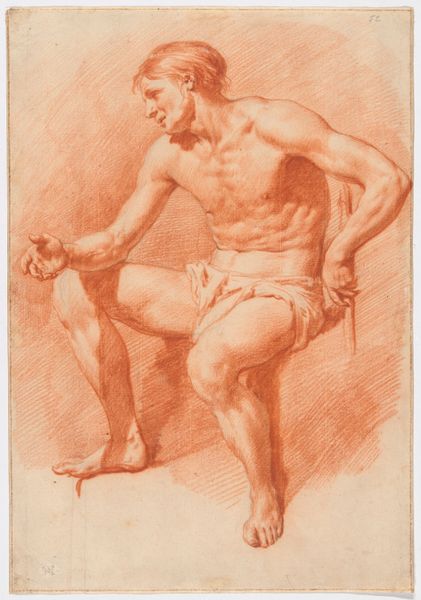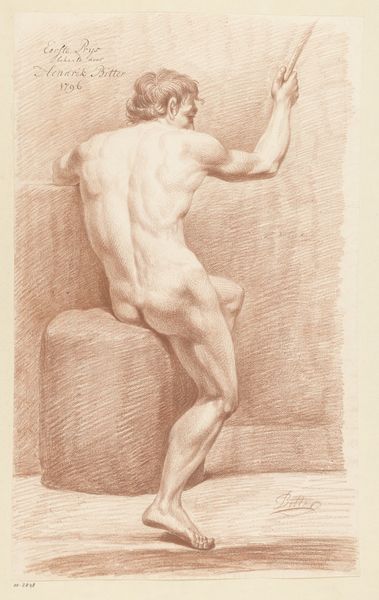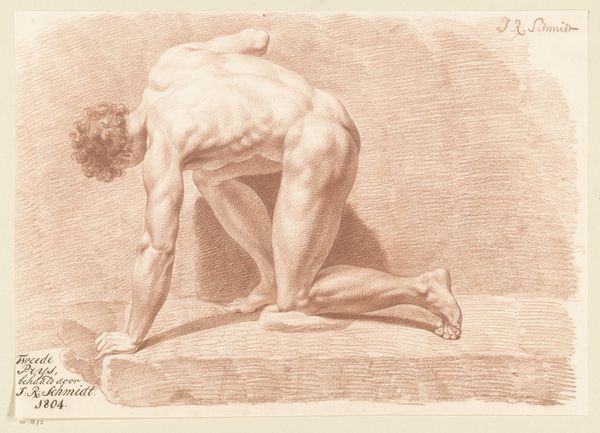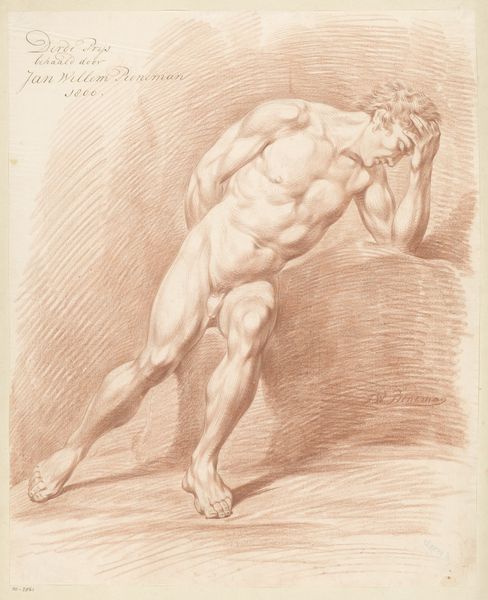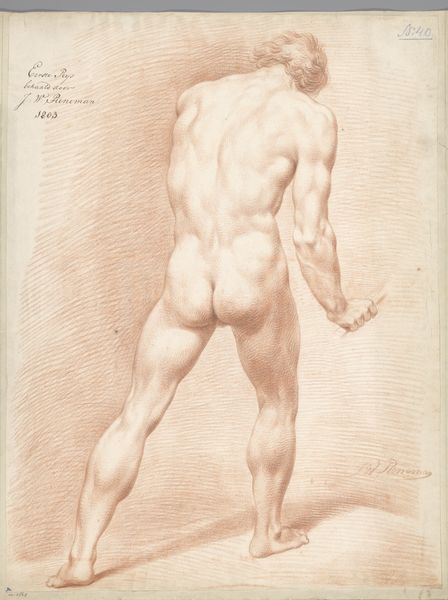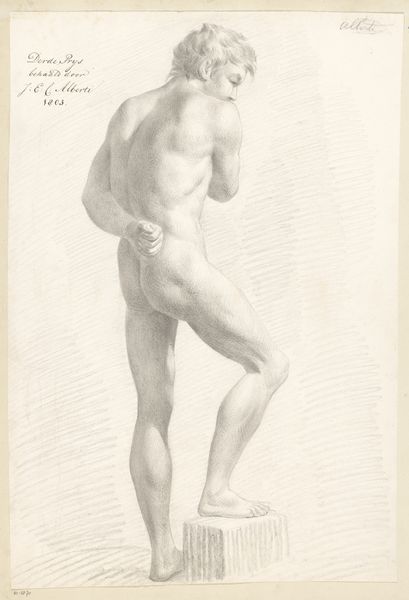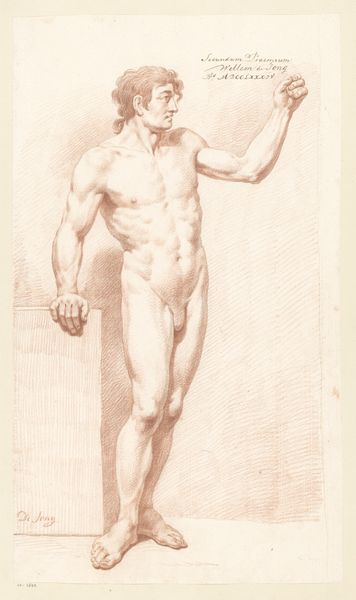
Brustbild eines betenden nackten Mannes, halb vom Rücken gesehen
0:00
0:00
drawing, pencil, chalk
#
portrait
#
drawing
#
figuration
#
classicism
#
pencil
#
chalk
#
15_18th-century
#
portrait drawing
#
history-painting
#
nude
Copyright: Public Domain
Editor: Here we have a work called "Brustbild eines betenden nackten Mannes, halb vom Rücken gesehen," attributed to Friedrich Wilhelm Schäfer, done with chalk and pencil. I am really struck by the subject's hands; they look coarse and muscular, very different from the ethereal quality I expect from neoclassical figuration. How would you approach this work? Curator: I find it helpful to consider the labour embedded within its production. Look at the sheer effort to create the tonal gradations using chalk and pencil. Think about the mining of the raw materials, the grinding of pigments to create the chalk, the shaping of the pencil lead, all physical processes, which underpin even an ostensibly "spiritual" image. What does this materiality tell us about its context? Editor: You're saying that the raw materials speak to a particular history of production. I guess I always think of materials in art history as…neutral. Curator: Not neutral at all! This wasn't mass-produced paper or graphite; the quality speaks to patronage, to a specific economic and social class consuming the finished product, even celebrating labor. Consider the pose of the man; even prayer involves physical exertion, supplication as work. Editor: So the artistic choices and the very making of the image become intertwined with a larger system? How would a contemporary artist working with similar materials contend with that legacy? Curator: Precisely! And they might engage critically by, say, using deliberately low-grade materials or highlighting the environmental costs of material extraction. They may be reflecting upon a history of class and access. How have your perceptions shifted now? Editor: I am starting to consider how a viewer like myself participates in a consumerism of materials as well as art and labour, something I hadn't fully accounted for until now. Curator: Exactly. By examining the process and production, we've moved beyond just admiring aesthetics, and considered the real world forces that have impact within visual culture.
Comments
No comments
Be the first to comment and join the conversation on the ultimate creative platform.
